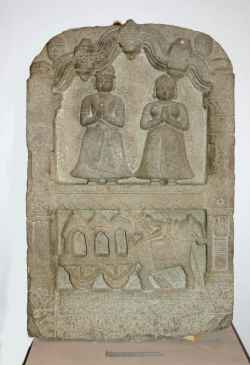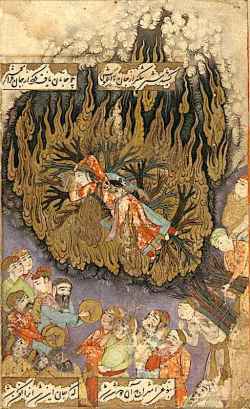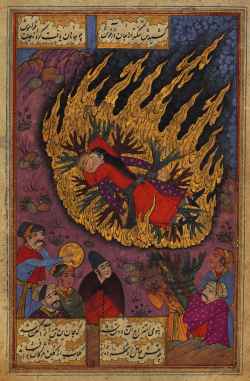in: Burning Women Widows, Witches, and Early Modern European Travelers in India, pp.
New York: Palgrave Macmillan, 2003.
Topics:
2. Sacrifice and religion: Comparisons, Antiquarians, Anthropology (16th-18th Century) 7. Sacrifices of self: Martirology and Catholic global missions (16th-18th Century)
2. Sacrifice and religion: Comparisons, Antiquarians, Anthropology (16th-18th Century) 7. Sacrifices of self: Martirology and Catholic global missions (16th-18th Century)
Edited by: Chiara Petrolini
Related Documents:
Sati Stone (17th-18th)
from: India
Ferenc Hopp Museum of Asiatic Arts, Budapest
Satī. The bride immolates herself on the funeral pyre (1657)
from: Isfahan, Iran
The Israel Museum, Jerusalem
Satī, from a Sūz u Gudāz manuscript. The union of the couple on the pyre (1657)
from: Sūz u Gudāz ms, Iran, Walters Manuscript W. 649, fol. 19b (Burning and Melting)
The Walters Art Museum, Baltimore, Maryland
Die flambierte Frau: Sati in European Culture
in: Sati, the Blessing and the Curse: The Burning of Wives in India, pp. 35-50
Oxford: Oxford University Press, 1994.
Les Veuves de Malabar: Sati, Colonialism, and the Enlightment
in: French Theatre, Orientalism, and the Representation of India, 1770-1865, pp. 19-71
Abingdon - New York: Routledge, 2021.



